BY LINCOLN ANDERSON | The venerable and influential Municipal Art Society of New York has weighed in on Mayor de Blasio’s Soho/Noho rezoning plan, and the verdict is — slow down!
The 125-year-old nonprofit has just released a new blog post that makes a compelling argument against moving forward with the plan as it currently stands.
For starters, the society faults the city for not supplying adequate visual renderings of what Soho and Noho could look like after the rezoning.
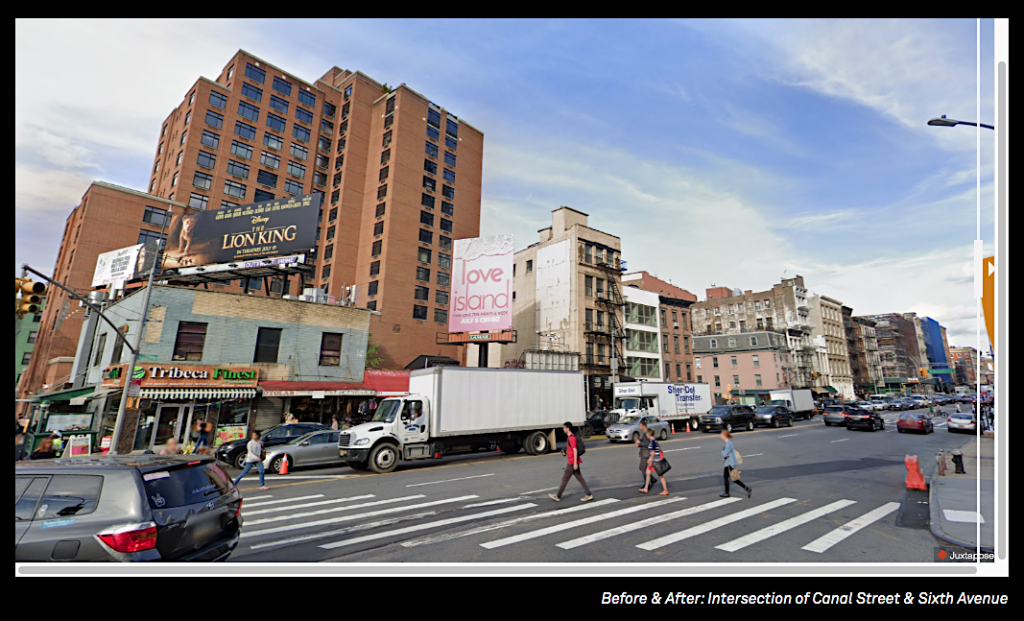
Doing what the city has not, M.A.S. for the first time is unveiling a visual representation of the potential scope of the city’s plan that features a brand-new interactive map, 3D models and more.
The computer images reveal a once largely low-rise Soho and Noho radically transformed, cluttered with orange and yellow rectangles thrusting into the sky, demarcating where a sea of new high-rise buildings could spring up under the rezoning.

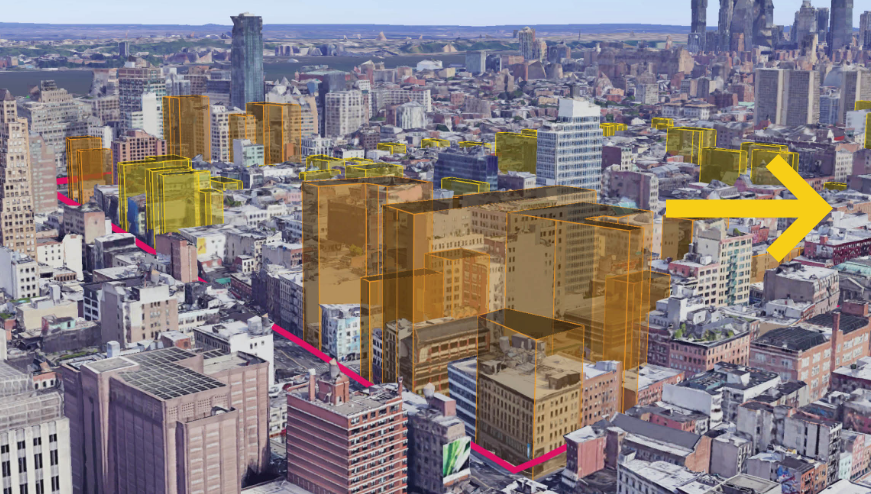
In short, according to M.A.S., the unprecedented scheme to upzone in one of the city’s landmarked historic districts has the potential for “wide-ranging negative impacts.”
In the post, titled “Soho/Noho: Who Knows?” M.A.S. details how the rezoning plan lacks clear development scenarios and definitions and how this lack of clarity may have adverse impacts on both the proposed affordable housing aspect of the plan and on the neighborhood’s historic buildings.
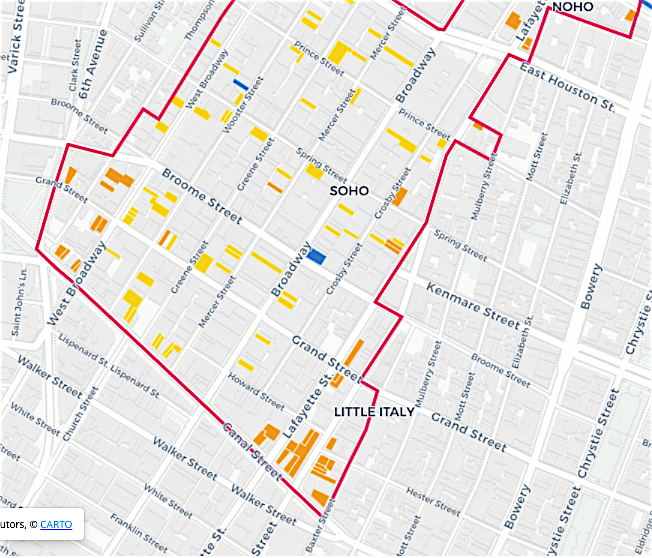
As the blog post explains, the rezoning plan includes “projected” and “potential” development sites. “Projected” sites are deemed by the city as more likely to be developed. “Potential” development sites are deemed less likely to be built on — yet, still may be. These latter sites might be smaller or on irregularly shaped lots, for example.
According to the blog post, “The [draft scope of work] states that the [Soho/Noho] rezoning will generate 27 projected development sites consisting of 42 separate tax lots, and 57 potential development sites consisting of 66 separate tax lots. Taken together, these lots are expected to generate 3,200 new residential units and 3.8 million gross square feet of development, roughly equivalent to a new Empire State Building and Chrysler Building (a combined 4 million gross square feet).”
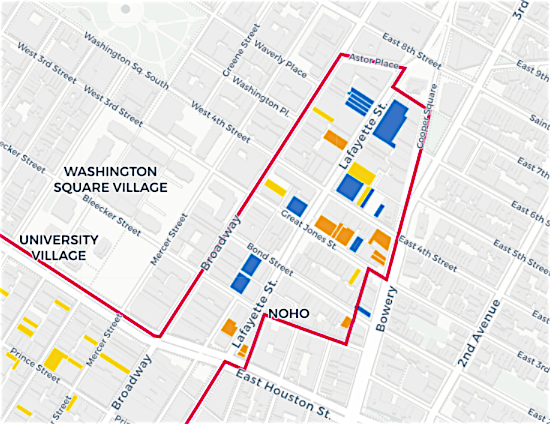
However, based on M.A.S.’s past work, the organization has found that other sites not previously identified by the city are, in fact, just as likely to be developed. According to the society, “This essentially renders the city’s projections completely irrelevant and may result in myriad unwanted outcomes.”
For example, the recent East Midtown rezoning, M.A.S. notes, spawned two massive skyscrapers on sites that had not even been considered during that rezoning’s planning process.
“Following the East Midtown rezoning in 2017,” the blog post says, “the first three sites currently planned for development in the district were not identified as either projected or potential development sites during environmental review. This is of no small consequence. Upon construction, one of the developments will become the tallest building in the Western Hemisphere by roof height. Another would be the second tallest structure in the New York City. We know that a failure to anticipate the type and scale of new development resulting from a neighborhood rezoning has impacts on open space, transit congestion, school seats and other measures of livability. [The city environmental review’s] lack of reliability in forecasting future development on non-projected sites is of added concern in Soho/Noho where individual sites hold such historic significance.”
Indeed, given that Soho and Noho are landmarked districts, development projects would need to be approved on a case-by-case basis by the city’s Landmarks Preservation Commission, M.A.S. points out. This would give enormous discretionary power to L.P.C., yet the whole process, as of now — namely, how L.P.C. would interface with the rezoning and developers — is a complete unknown, the society notes with real concern.
“Several historically significant buildings have been identified as potential development sites,” the blog post notes. “Eighty percent of the rezoning area is within a historic district, and 48 percent of projected sites and all of the potential sites are within a historic district.
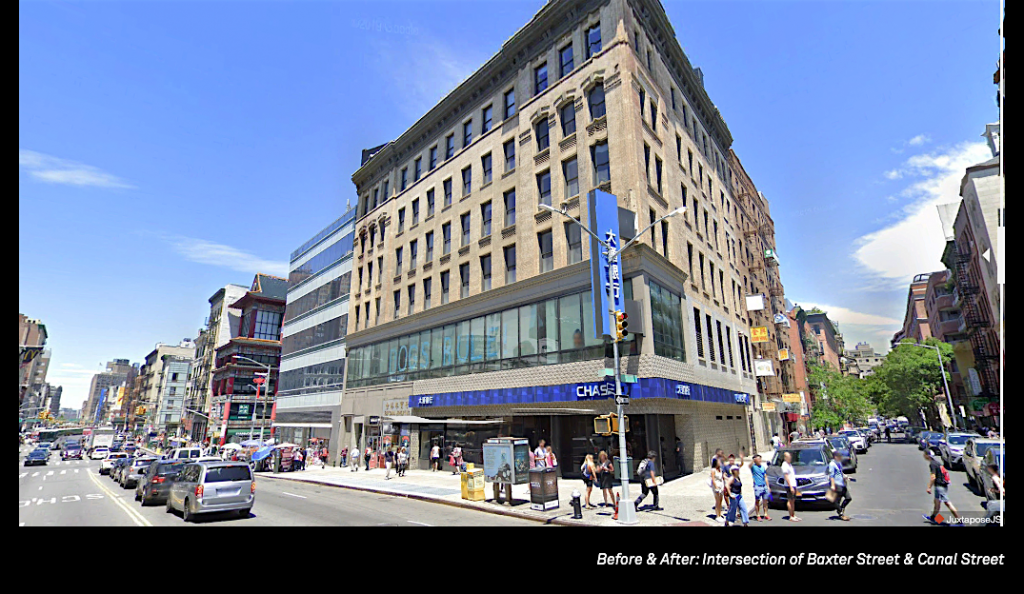
“The lack of a clear development scenario and the fact that there is no understandable path between the proposed rezoning plan and the Landmarks Preservation Commission review process is unacceptable,” the society says. “In addition, [the Department of City Planning] should plainly state…the breadth of impacts of the rezoning on historic buildings. As currently disclosed, only LPC’s discretionary review process will determine the extent of the changes to SoHo/NoHo’s historic districts as a result of this plan. Surely the City is not so siloed that it cannot share with the public how this process would work.”
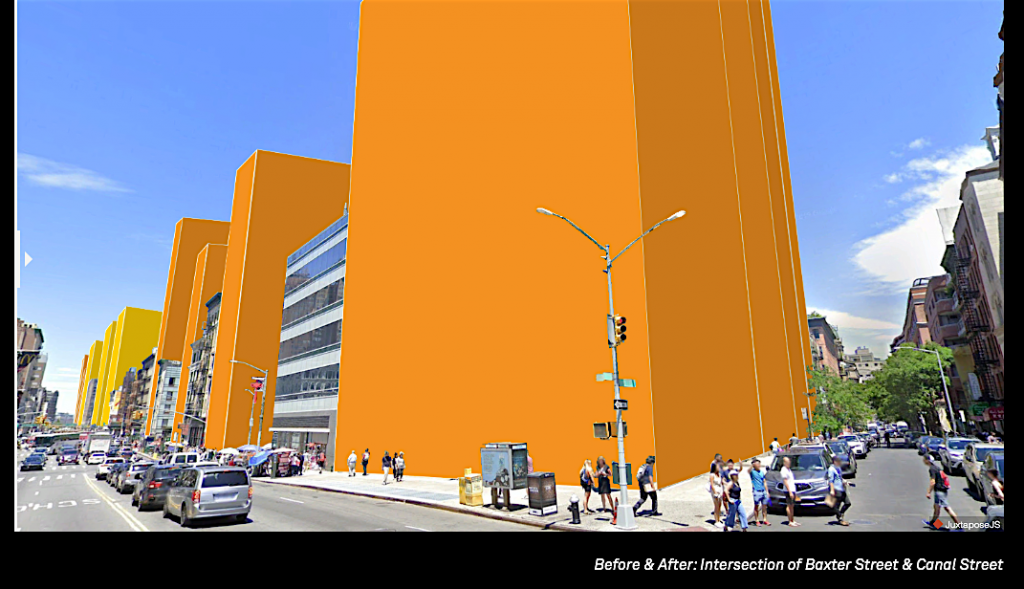
In conclusion, the M.A.S. post states, “The City should not move forward with the SoHo/NoHo Neighborhood plan without learning from past missteps. The City now has evidence from other rezonings about the likely generation and displacement of affordable housing units and should bring that to bear.”
However, Mayor de Blasio, under intense pressure from big real estate and housing-justice advocates, is scrambling to approve the major, unprecedented rezoning in his final year before being term-limited out of office.
(To read the full M.A.S. blog post on the Soho/Noho rezoning, click here.)
M.A.S. played a role in crafting the city’s original zoning rules 100 years ago. It later became focused on historic preservation, famously helping save Grand Central Terminal from the wrecking ball.
According to its Web site, “The Municipal Art Society of New York lifts up the voices of the people in the debates that shape New York’s built environment and leads the way toward a more livable city from sidewalk to skyline.”

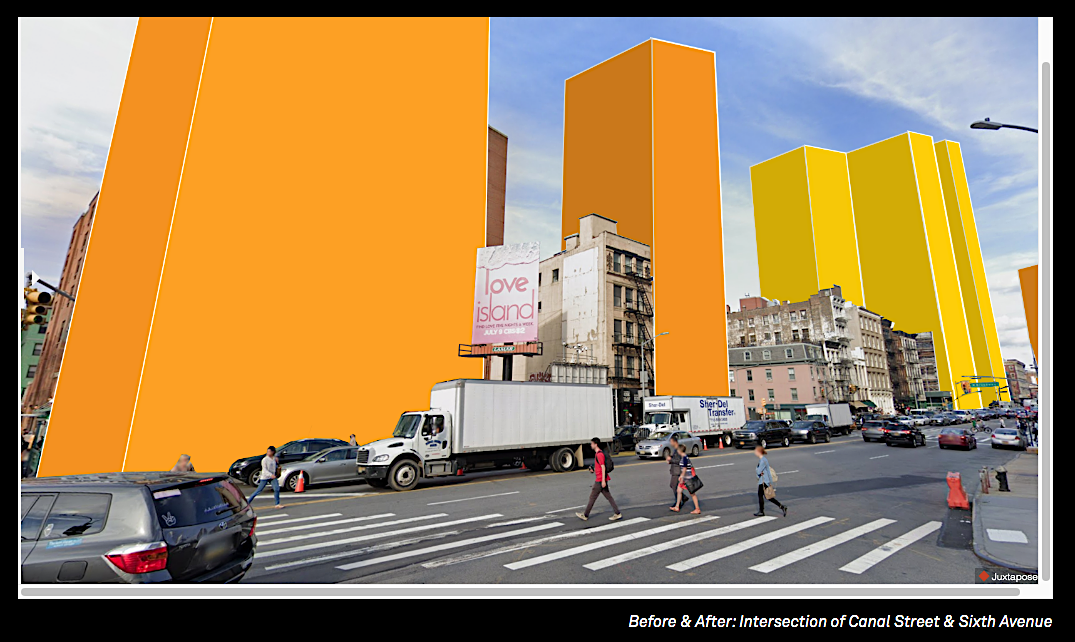
The city’s Soho/Noho plan is also problematic because it is directly based on the plan hatched by Open New York. The Open New York plan was written by a few of its members, including ONY founder Ben Carlos Thypin, who runs a real estate investment firm Quantierra/Scipre Analytics. While Open New York was lobbying for the Soho/Noho rezoning, Thypin brokered a $30 million deal right at 64 University Place, just outside of the rezoning boundary. He will likely cash in big in this rezoning. Open NY claims it has a recusal policy for its many members working in real estate but this is a lie.